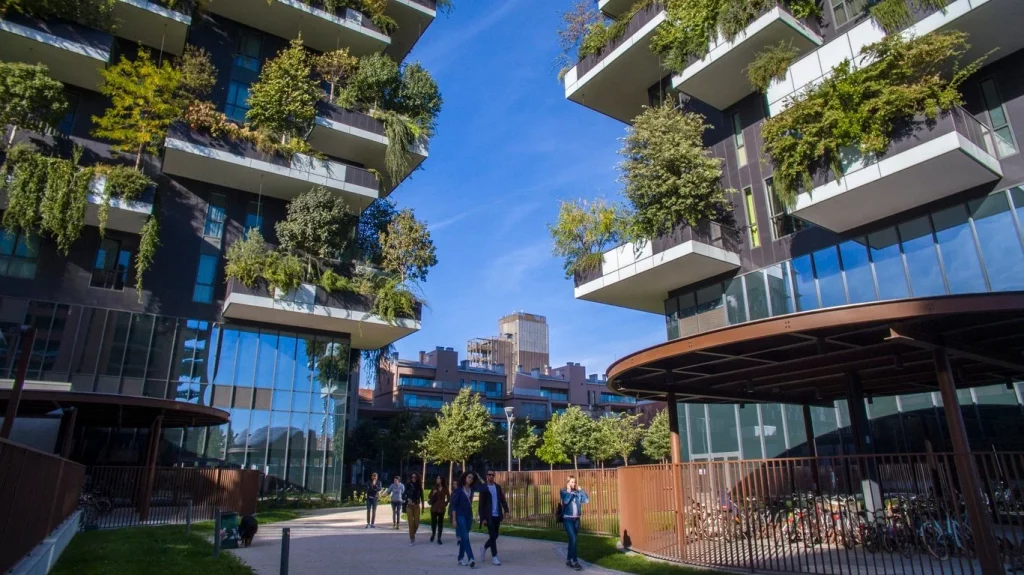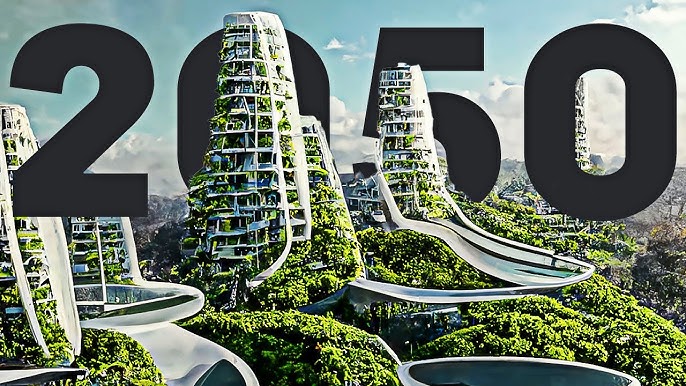Introduction: Envisioning Future Living Spaces
The homes we inhabit are more than shelters; they reflect the values, technology, and aspirations of their time. In the twenty-first century, humanity faces unprecedented challenges—climate change, urban overcrowding, resource scarcity, and the need for sustainable development. These pressures demand a profound rethinking of how and where we live. Future habitats will be shaped not just by architectural innovation, but also by advances in materials science, environmental engineering, artificial intelligence, and even space exploration.
This article explores the coming transformations in human habitats: from eco-adaptive smart cities to floating ocean settlements, from high-tech rural communities to extraterrestrial colonies. It seeks to answer a fundamental question: how can future homes sustain human well-being while respecting planetary boundaries?
I. The Historical Arc of Human Dwellings
1. From Caves to Cities
Early shelters were primarily protective, built from natural materials to endure local climates. The Agricultural Revolution brought permanent villages and the first urban centers, allowing humans to cluster and share resources.
2. Industrial and Modernist Shifts
The Industrial Revolution reshaped architecture: mass-produced materials enabled taller, denser, cheaper housing; modernist design favored function over ornament, prioritizing efficiency.
3. Post-Industrial and Digital Ages
Late 20th-century suburbs and skyscrapers reflected new forms of economic life, while digital technologies introduced smart appliances, early automation, and a growing awareness of ecological impact.
II. Drivers of Change in 21st-Century Habitats
- Climate Change and Environmental Limits
Rising sea levels, heatwaves, droughts, and extreme weather challenge existing urban layouts. Housing must adapt to shifting coastlines, protect residents from hazards, and reduce its own carbon footprint. - Population Growth and Urbanization
By 2050, two-thirds of humanity will live in urban areas. Cities must accommodate millions more without over-straining infrastructure or depleting resources. - Technological Convergence
Advances in robotics, AI, renewable energy, bio-based materials, and 3-D printing open new architectural possibilities. - Changing Lifestyles and Values
Younger generations emphasize sustainability, flexibility, wellness, and work-life integration—values that are influencing housing demand.
III. Eco-Adaptive Urban Futures
1. Vertical Forest Cities
Architects like Stefano Boeri are pioneering “vertical forests”—residential towers draped in vegetation that absorb CO₂, regulate temperature, and enhance urban biodiversity.
2. Climate-Resilient Floating Communities
Low-lying nations such as the Maldives are experimenting with floating neighborhoods using modular platforms that rise and fall with sea levels.
3. Circular-Economy Neighborhoods
Future districts will recycle water and waste locally, use modular components for flexible building lifespans, and generate renewable energy onsite.
4. Smart-City Integration
Sensor networks and AI-driven energy grids will minimize consumption and optimize climate control, lighting, and traffic while preserving residents’ privacy and autonomy.
IV. Future Rural and Hybrid Communities
The future is not exclusively urban. Some technologists envision “smart rural hubs” where advanced connectivity enables remote work, localized energy production, and sustainable agriculture. These hubs could reduce urban overcrowding and rebalance demographic trends.
In some regions, peri-urban zones—between city and countryside—may evolve into self-sufficient eco-towns that combine agricultural productivity with cultural vibrancy.
V. Materials and Construction Revolutions
- Bio-Based and Carbon-Negative Materials
Innovations include mycelium-based bricks, algae-grown panels, bamboo composites, and carbon-sequestering concrete. - 3-D Printed Homes
Large-scale 3-D printers can construct houses rapidly with less waste and lower cost—critical for disaster recovery and housing shortages. - Modular and Prefabricated Systems
Flexible modules will allow residents to easily expand or reconfigure their living space as needs change.
VI. Intelligent and Responsive Interiors
Future homes will not be static.
- AI Personal Assistants will optimize energy use, air quality, and security while respecting privacy.
- Health-Monitoring Rooms will integrate sensors to track vital signs and guide personalized fitness or rehabilitation routines.
- Augmented Reality (AR) Environments will turn living rooms into immersive learning or entertainment spaces.
- Biophilic Design—incorporating natural light, ventilation, and indoor greenery—will promote mental well-being.

VII. Space Habitats: Extending the Human Home Beyond Earth
Humanity’s dream of living beyond Earth is no longer science fiction.
- Lunar and Martian Bases: Will likely begin as research outposts, evolving into semi-permanent colonies powered by local solar and nuclear energy.
- Orbital Habitats: Rotating space stations could house workers, researchers, and even families.
- Ethical and Social Challenges: Questions of governance, resource ownership, and cultural identity will define these off-world communities.
VIII. Social Equity and Access
The promise of futuristic habitats risks being undermined if only elites can afford them. Key priorities include:
- Affordable Smart Housing Programs to bridge digital and economic divides.
- Inclusive Design Standards ensuring accessibility for people of all ages and abilities.
- Community-Driven Planning to preserve local cultures and prevent homogenization.
IX. Case Studies of Emerging Projects
- NEOM (Saudi Arabia): A $500-billion futuristic city emphasizing renewable energy, linear urban form, and car-free living.
- The Oceanix Busan Project (South Korea): A prototype floating city designed for climate resilience.
- Mars Dune Alpha (NASA/ICON): A 3-D printed Mars habitat simulation for future astronauts.
- Singapore’s Smart-Nation Housing: Integration of data-driven resource management with affordable urban apartments.
X. Ethical and Cultural Dimensions
- Loss of Traditional Architectural Heritage: How to balance modernization with preservation.
- Algorithmic Decision-Making in Planning: Ensuring AI planning tools respect human values and diversity.
- Cultural Notions of ‘Home’: Future dwellings must address emotional and social as well as functional needs.
Conclusion: Towards Habitats That Sustain Both People and the Planet
The future of human living spaces will be defined by our capacity to integrate technology with ecological wisdom and cultural sensitivity. We are entering an era where homes are not only shelters but also platforms for health, learning, productivity, and environmental stewardship.
To design the homes of tomorrow is to design the future of humanity itself. By embracing sustainable materials, inclusive policies, and imaginative urban–rural–space architectures, we can build habitats that protect the planet, nurture human flourishing, and reflect our collective responsibility as stewards of Earth and beyond.
















































